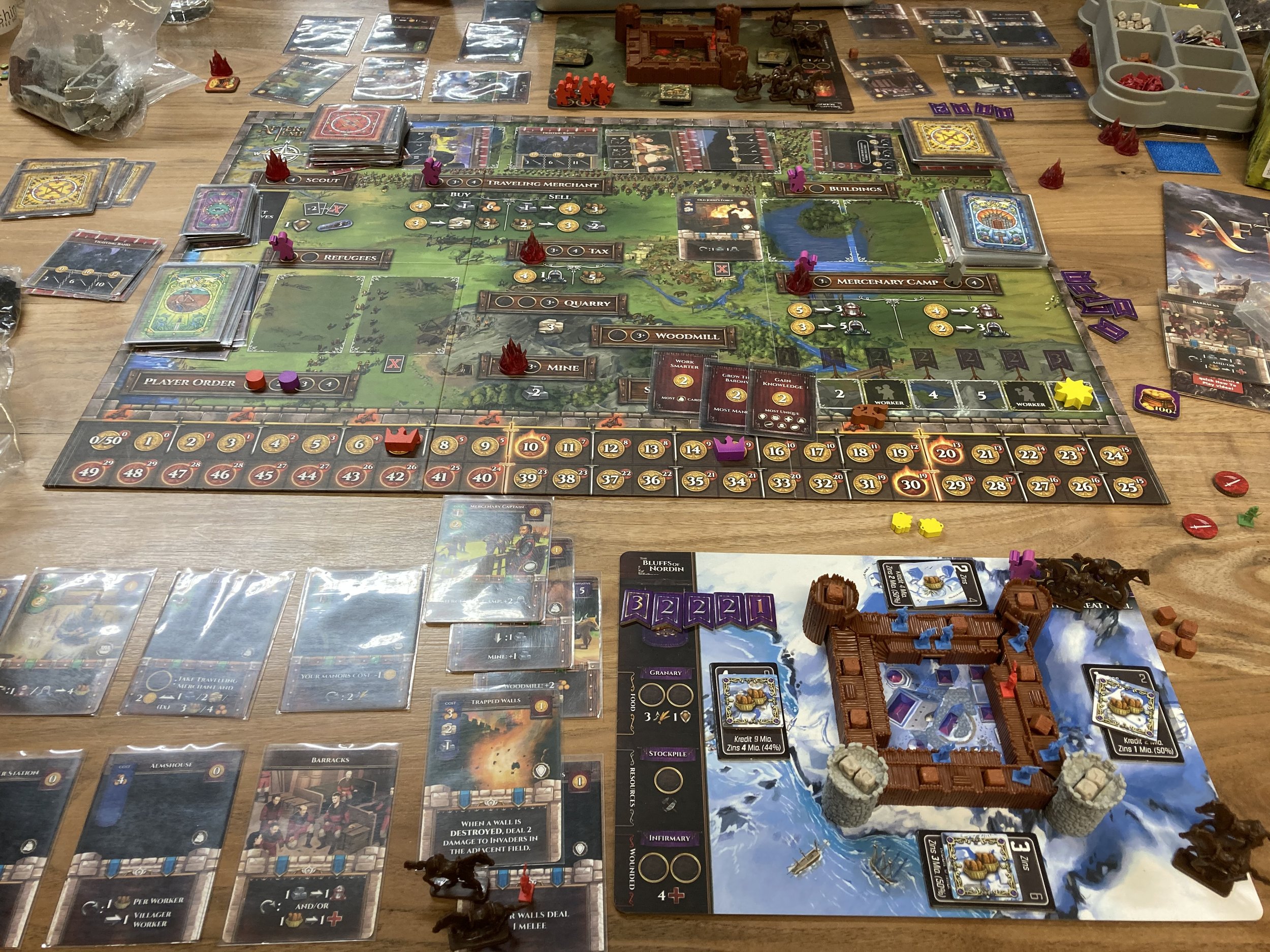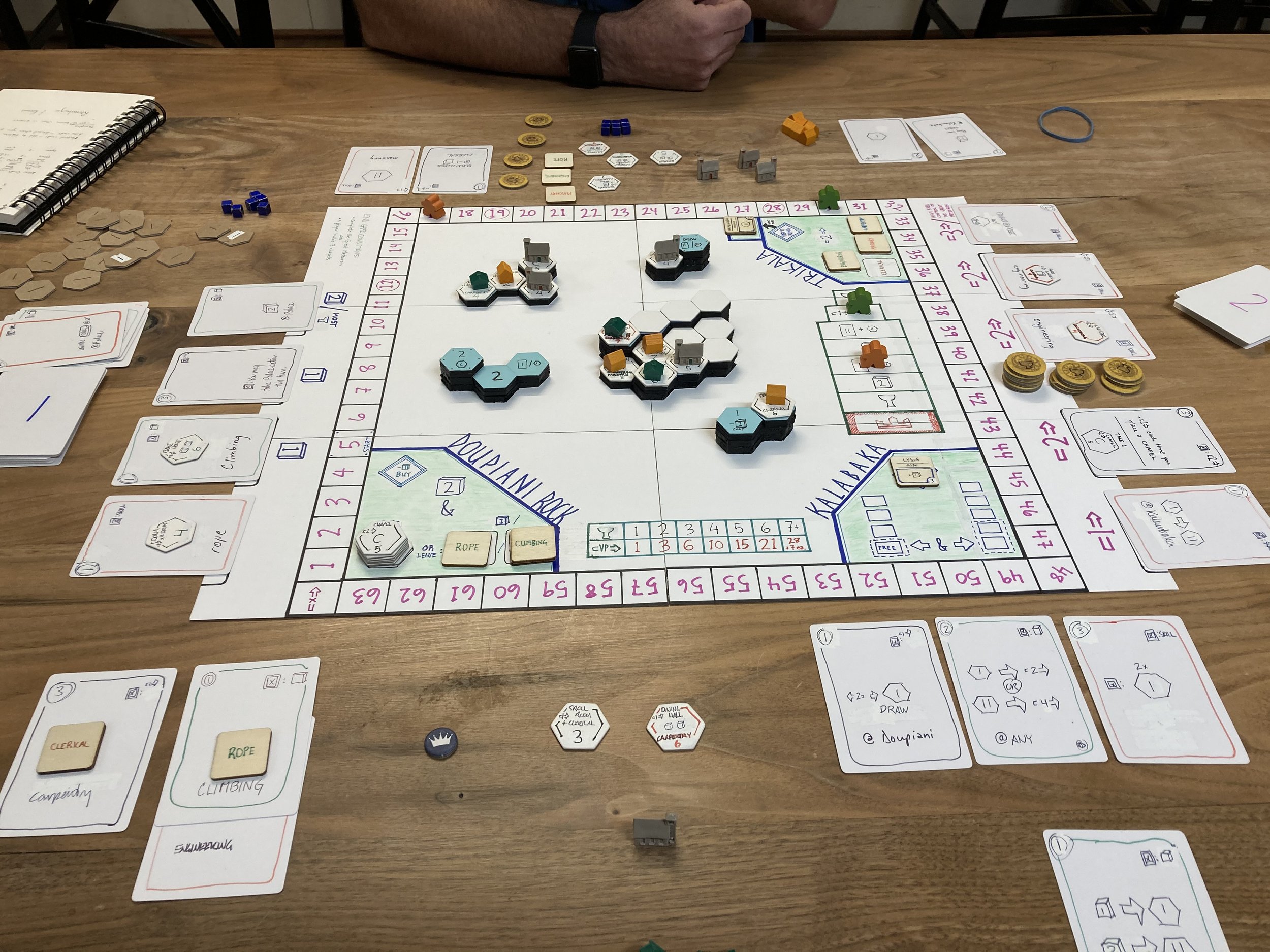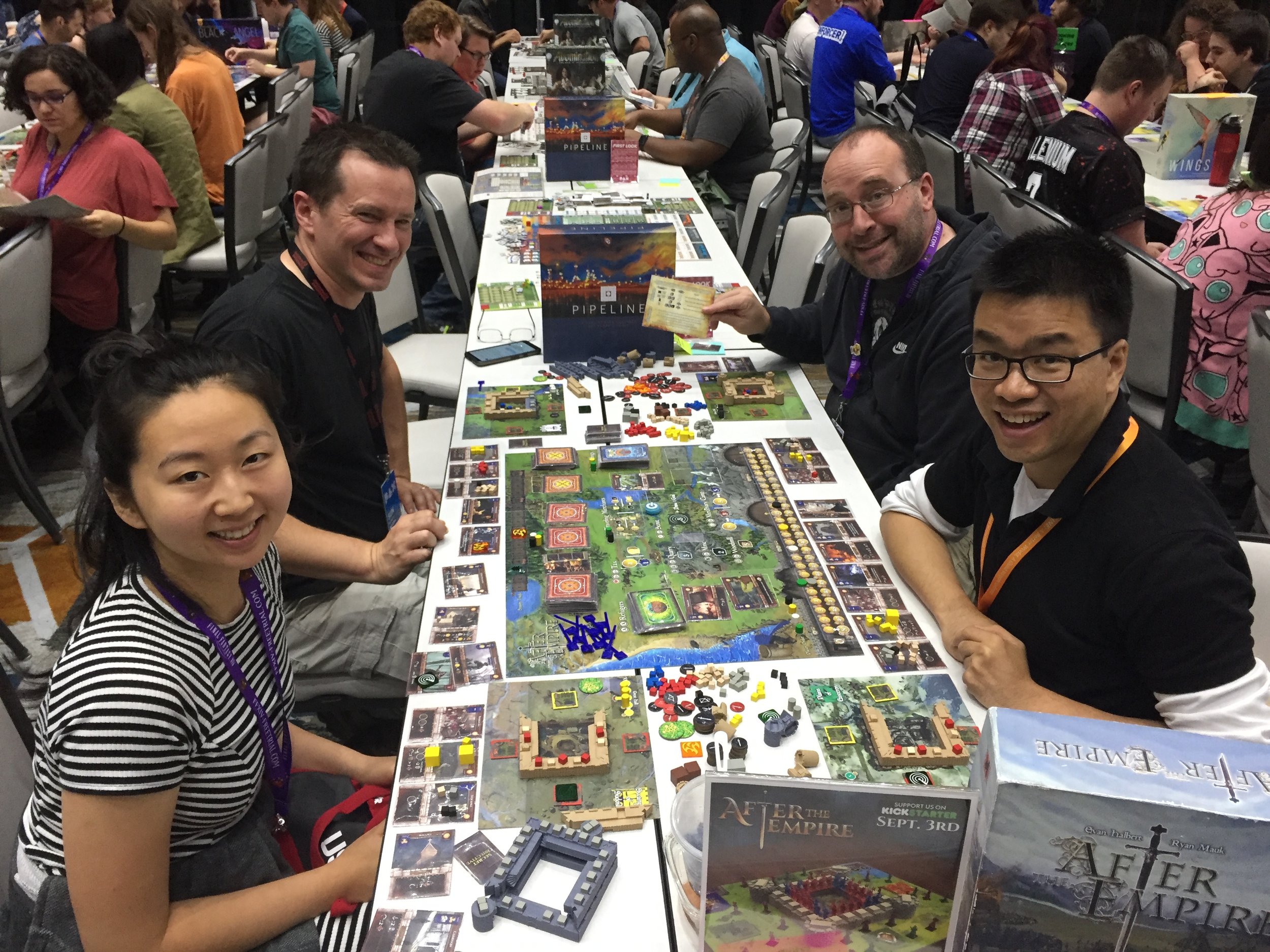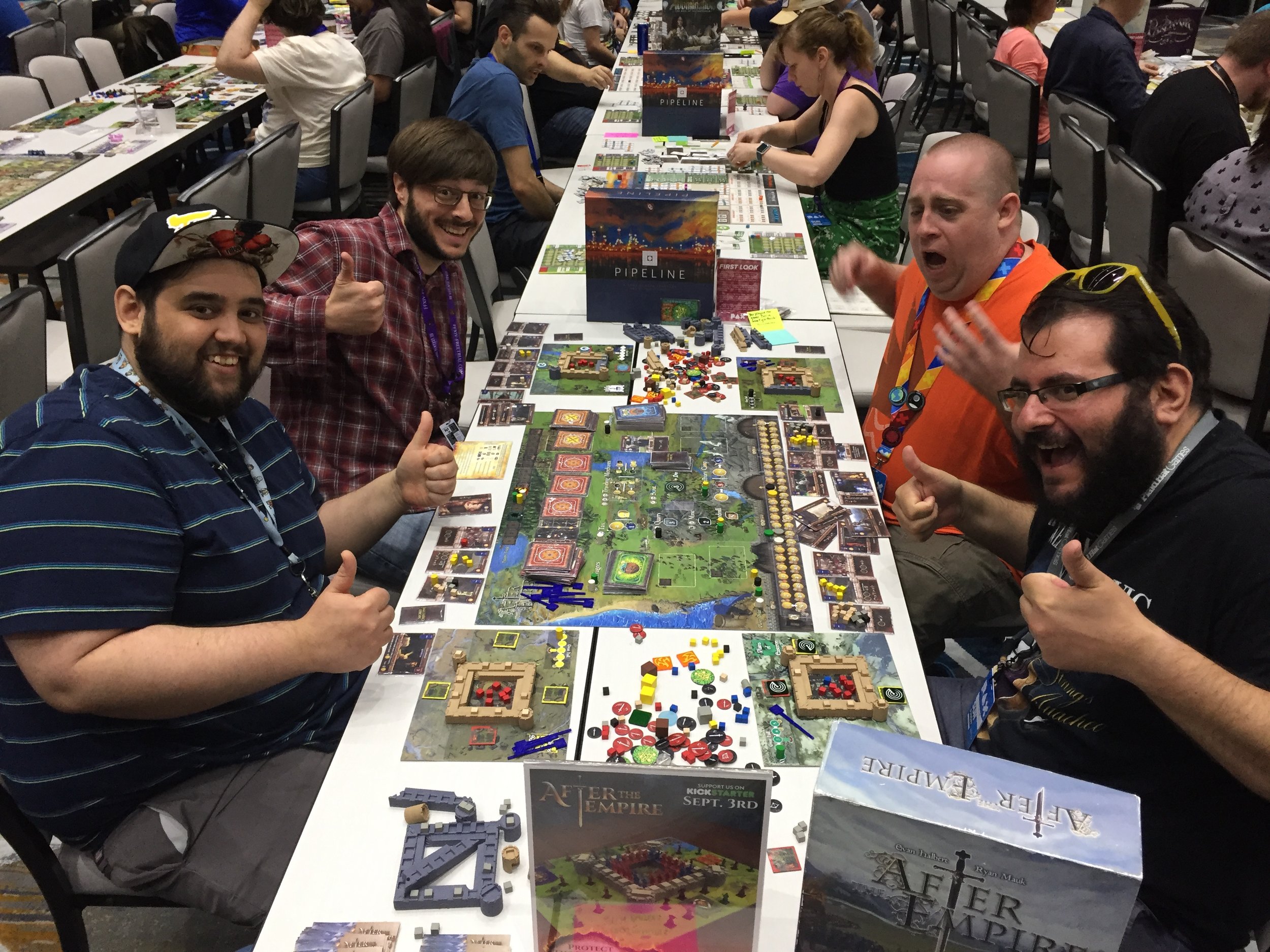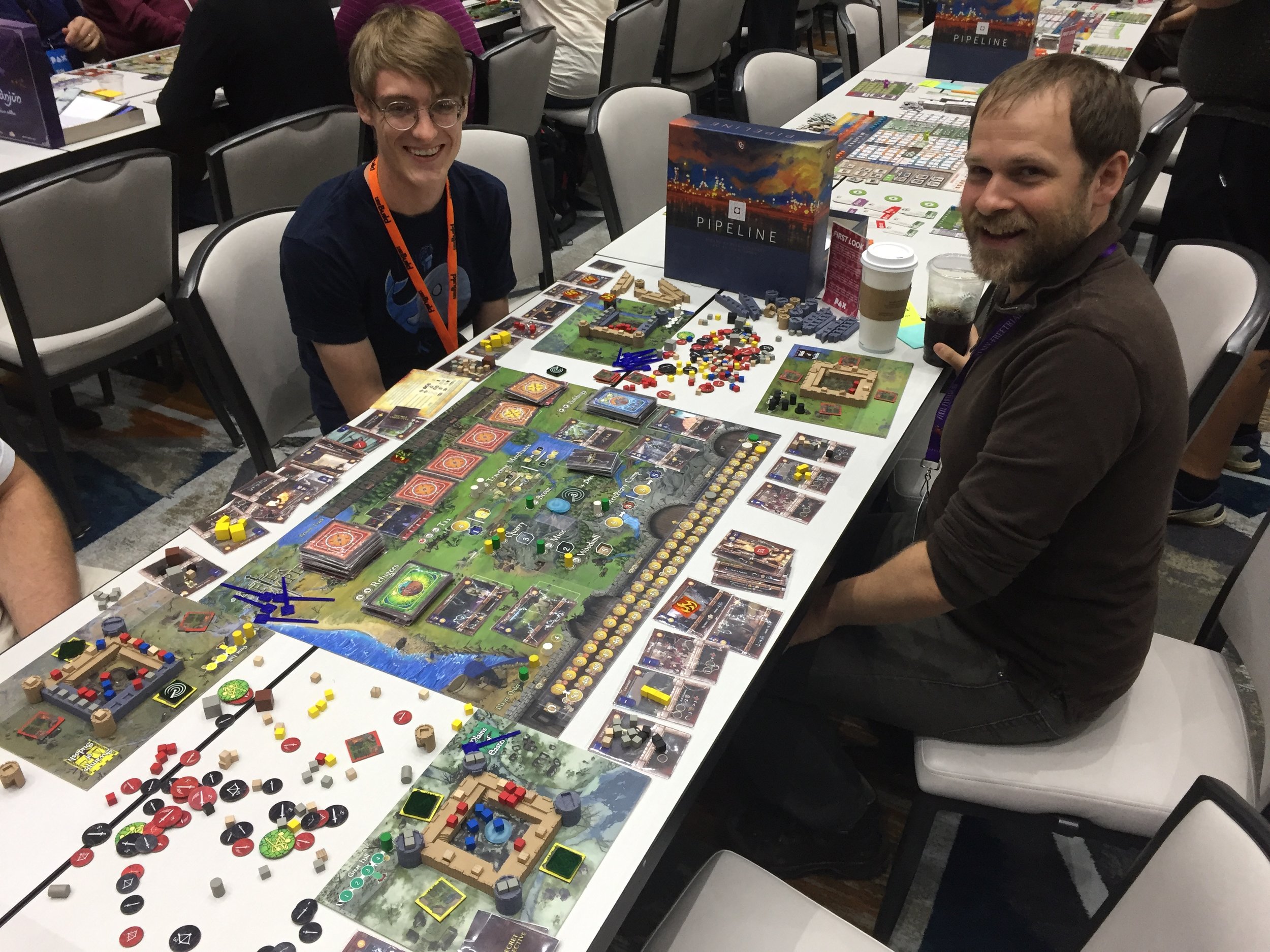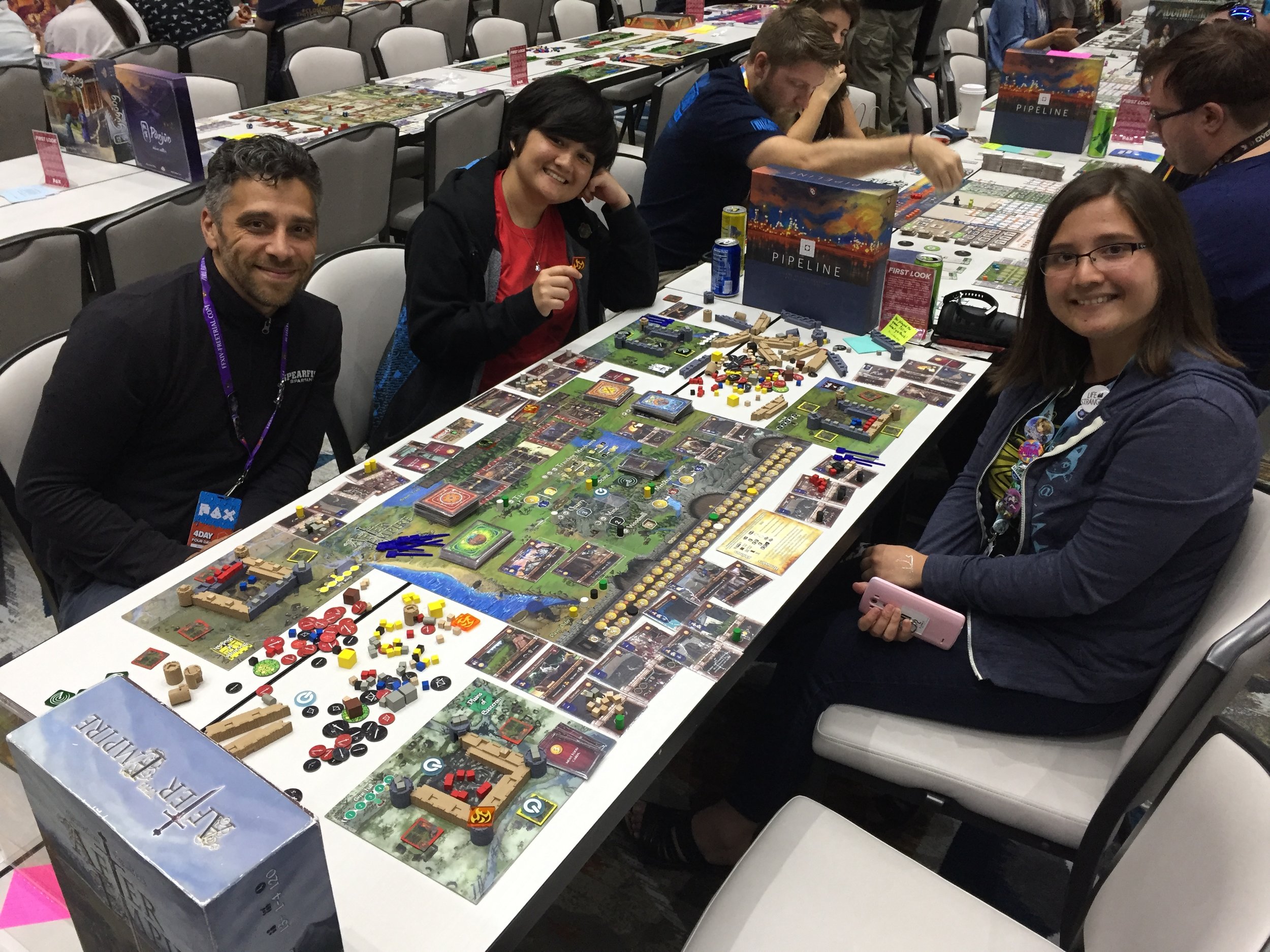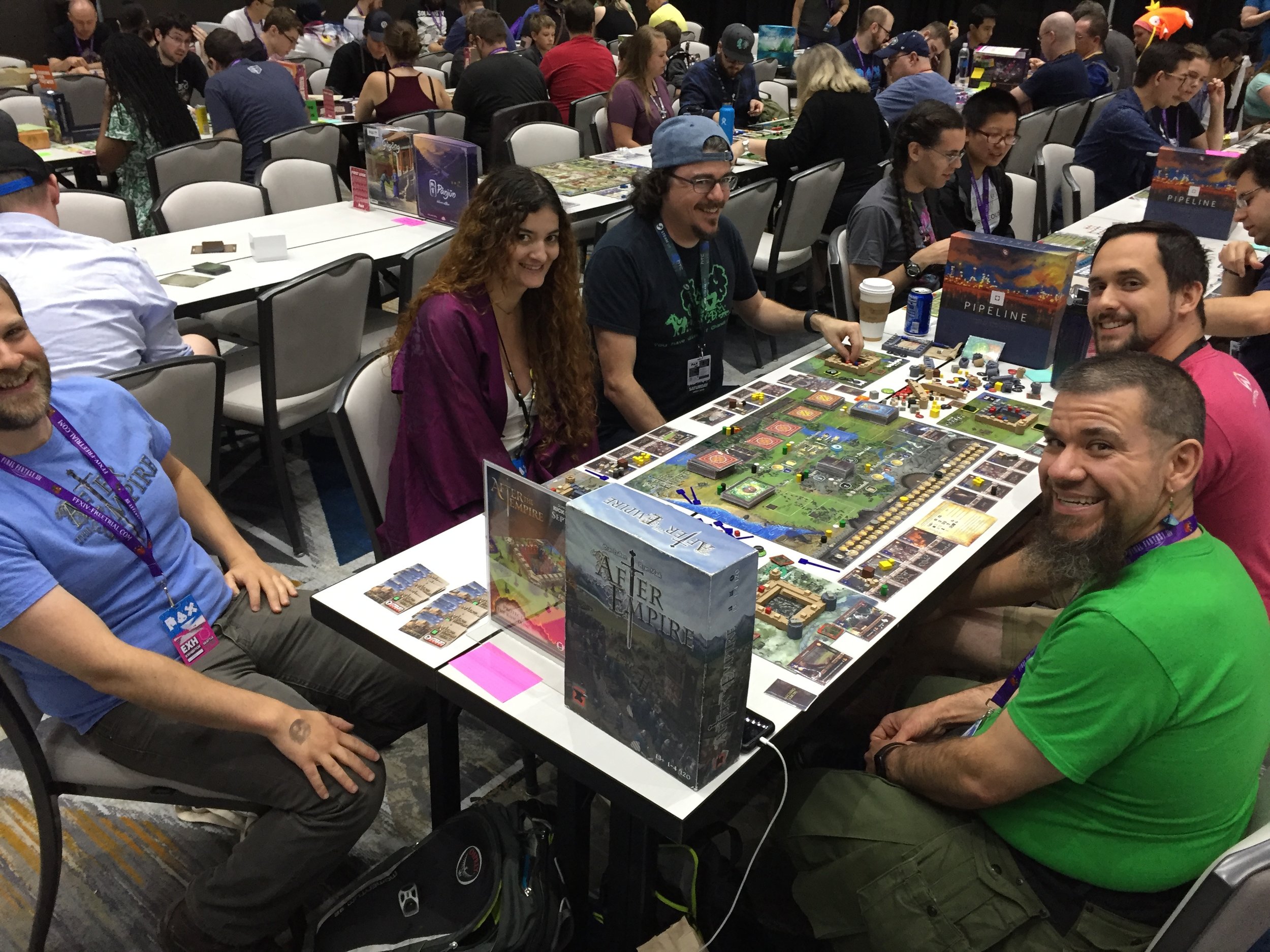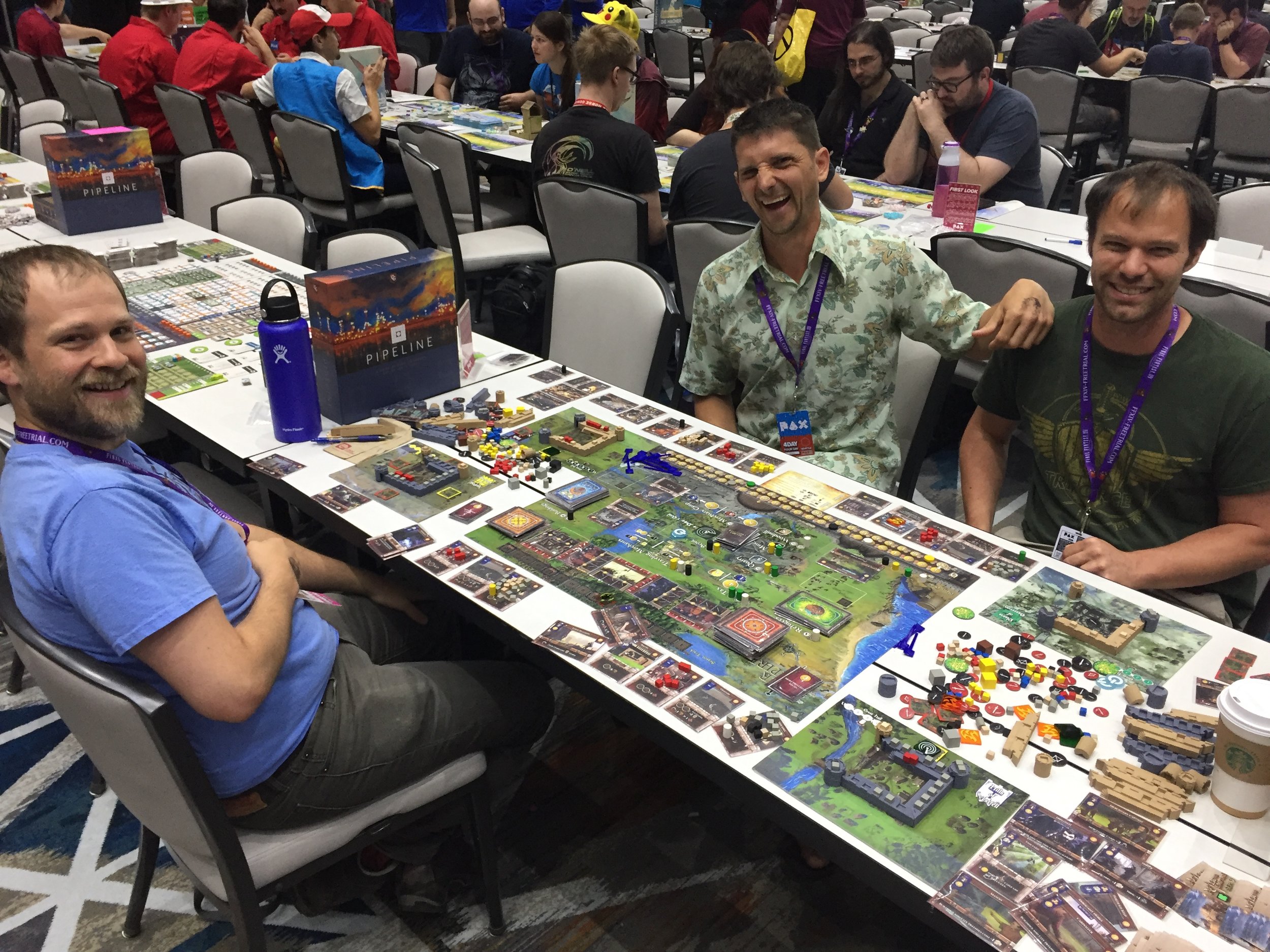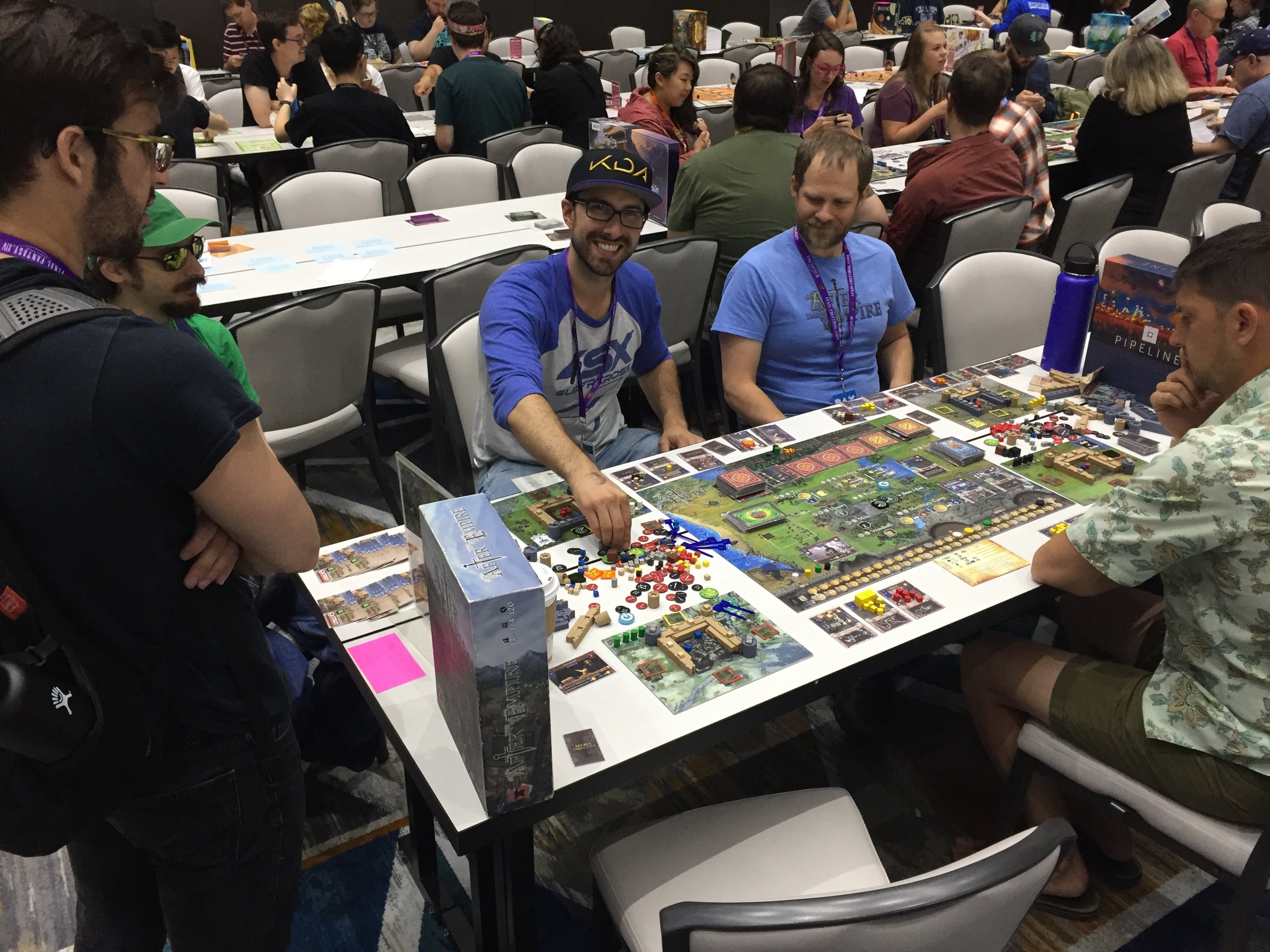Hi Everyone!
We’re in a holding pattern for After the Empire, while Grey Fox is working on finalizing files, rules, etc. So, our last few sessions have been focused on a game with the working title “Grime”. We’ve never really kept detailed public records of our day to day design work, but hopefully this will be useful or interesting for some of you out there. If there are any particular aspects of our process you’re curious about or that you’d like us to be more detailed about in the future, let us know so we can do a better job keeping you in the loop!
While we obviously enjoy the tried and true themes like After the Empire’s medieval castle defense and city-building, Ryan and I also really enjoy exploring more unique themes. If you follow us, you may already know about Mountain God’s Revenge, but Grime is another one of those games we’ve been having fun playing around with lately.
In Grime, our world is a kitchen floor filled with microscopic inhabitants, who collectively experience an extinction-level cataclysmic event every 1000 generations, The Great Moppening! Each player controls several Grime Lords, who must all work to save as many of your beleaguered grimes as you can by the end of the game, so that they may carry on in the name of those we lost and thrive in the safety of the The Under-Fridge or in some of the smaller protected lands of The Grout-Cracks.
As usual, our playtesting begins mostly with 2-player sessions (Ryan and I) until we feel it’s ready and would be useful to see how our current system/game feel fares with more players. Sometimes that goes very differently than expected! Game design is basically a process of making goals and choices, then iterating on how to best actually get there. Of course, your vision and choices can change some as you work, sometimes feeling more like you’re just revealing the unique game that was always hidden there somewhere in the pile of cards and paper scraps.
Some of the more ubiquitous choices that need to be made are: what is the goal for game length, what kind of technical strategy/skill vs luck balance is ideal, how complex should the system interactions be, what kind of systems lend to the theme and how can you incorporate that them into those systems, and what can you bring to the community in terms of unique experiences. And the biggest questions is of course, is this game fun? Obviously, there’s no absolute correct answer, since every individual in the potential target audience has different specific preferences and experiences they find enjoyable. So, the choices you make as a designer (or team) are what really give your games their unique feeling, experience, or flavor. That’s why this industry could make 1,000s of games set in medieval Europe, yet while similar they are each specifically unique and different players will have stronger preferences for some of them over others.
We have chosen a moderate-length 45-60 minutes, mild to moderate complexity, worker movement/action selection, pick up and deliver sort of game, with higher strategy and lower luck in the form of randomly-drawn card effects you can play on your turn, as well as increased replayability with a modular board setup. As a more strategy than luck game, we’ve mostly limited player to player interaction in a more Euro style of resource scarcity, but there is still some direct interaction and messing with others currently with a couple cards and worker upgrades. Each round, players alternate moving their Grime Lords and activating the action location they’ve moved into with their grimes in tow on their way to the safety of The Under-Fridge. Each Grime Lord has a speed and a grime carrying capacity, which can be upgraded, as well as some some cool extra abilities they can gain. After each player has used all their Grime Lords for the round, the farthest un-mopped portion of the game board flips over to the “Bleached” side, which is of course deadly to your kind! There are still some powerful actions to be had in the ever-growing and dangerous mopped portion of the game board, giving you some tough choices as far as the best use of your Grime Lords and the grimes they carry. The game ends with the last of the open floor has been mopped. Each player counts how many grimes they’ve saved under the fridge or in grout cracks along the way to see who wins.
Our last session had us trying to find the ideal balance between Grime Lord movement and carrying capacity, board space quantity and ease of access, pacing of the game progression, grime spawning quantity each round, and possibly adding more randomness or other additional elements. In this early stage of game design, it’s tough to know how many variables to change as once, since they all affect one another. As we’ve become more comfortable trusting our game design instincts, we can get away with making larger changes in shorter periods. But, later on in the process, making more incremental change for fine tuning purposes will be a better idea. But for now, we’re still figuring the bigger things out and we made some fairly large changes, which seem to have turned out fairly well.
#1) Previously, upgrading your Grime Lord was added as an alternate action to choose instead of moving and activating a location. This had caused a lopsided feeling where the first half of the game was mostly best spent just upgrading every action until the the second half of the game, when you finally play the game as we intended. Some games do well with this sort of early game engine build-up, and choose the right moment the switch to point scoring, but we wanted upgrades to be viable throughout the game and not the obvious best choice for only half of it. So, went back to only several action locations on the board to upgrade, rather than an always available alternative action. It may still be the best option to rush to those action spots, but we’re keeping an eye on it.
#2) We felt like we needed to space out the actions just a little farther so that upgrading speed wasn’t strictly better than carrying capacity for Grime Lord stats. Speed is still important, but since it’s a larger board overall, each incremental speed increase is a proportionately smaller gain. This session did feel like carrying capacity was becoming more important relatively, but we need to make sure it doesn’t get unbalanced the opposite direction.
#3) We previously could spend grimes from the board as a resource to upgrade your Grime Lord in the same location. This was a sort of colony growth and differentiation thematic effect. This exacerbated the issue of rushing to upgrade your Grime Lords in the first half of the game, since it also behooved you to enter and expend those grime resources in this way to deprive your opponent of those grimes on their turn. We tried only allowing expending grimes that you’d already “saved” under the fridge or in some grout cracks along the way (which are also your Victory Points…we seem to end up often using VPs as a spendable resource in our games). This seems to have slowed down the early game rush to upgrade, or at the very least makes getting to some of the actions spaces other than upgrading as a necessary step. Game mechanics interactions are often a good thing, but we must make sure the other actions don’t become simply procedural or artificial barriers to upgrading. So we have to watch them and make sure there’s a viable strategy of not doing as much upgrading than the person next to you and still having a decent chance of winning through these other choices and actions.
#4) We are still vacillating on how grime spawning works, or effectively: how much primary resource should be made available to begin with and how much extra each round as the game progresses. Scarcity is usually an important component of even mildly Euro-style games, since the main player to player game tension is decision-making and often access to those resources. So, too much stuff and it doesn’t really matter what the other players are doing because there’s plenty to go around, which leads to a much more simultaneous solitaire feeling than we want. Or, too little and mistakes are amplified, and the game becomes too gritty and tense, where missed choices early game can doom you to playing out an inevitable loss. So, you need to right amount of choices mattering, but not so much that players are driven to inaction due to the existential weight of each choice. Obviously, this preference varies from player to player, but for a mild to moderate game of 45-60 minutes in length, we think a nice middle ground is appropriate.
#5) We are thinking of adding a touch more randomness than we played today. As mentioned above, this continuum slider needs to be in about the right spot for this type of game. Too much and it can feel like your choices don’t matter, too little and it can feel like the game is too scripted or can be “solved” and then each choice becomes less interesting because there’s always a best choice. We are toying with the idea of a variable amount of floor mopping each round, so you have a little more push your luck element when hanging near the bleached/mopped end of the board (because your Grime Lords can die!).
#6) We may eventually add another mechanical element. Currently, even though your goal is to save as many grimes as possible (you and the other players are part of the same group and save the same grime species), there’s no real thematic downside to letting tons of them die to the bleach (or absorbing them in the form of Grime Lord upgrades), as long as you saved more than your opponent. We’re not envisioning a coop game for this, but we have some ideas for a negative effect from letting certain amounts of grimes die. Alternatively, we’re also toying with benefits for nobly sacrificing a Grime Lord for the cause. One or both of these may end up being expansion material, but they may also be a necessary part of the base game. The sacrifice bonus makes more sense, especially if we go with random board mopping amount and you end up losing a worker in a more luck based way that you’ve invested a lot into. We’ll find out!
Hopefully, you found some of this interesting! Feel free to ask us any specific questions! Here’s a photo I thought to take only after we’d packed the board up (although you can see the start of one of my classic chicken-scratch design note sheets/napkins…this one is still somewhat legible; it gets much worse from here!):
